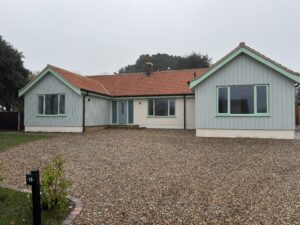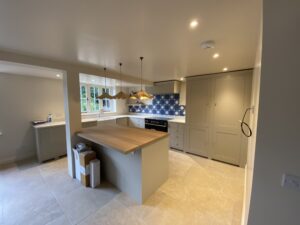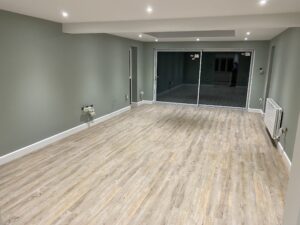Converting a property into a House in Multiple Occupation (HMO) can be a smart investment strategy, particularly for landlords looking to maximise rental yields. HMOs — where three or more unrelated people share a home and facilities — are increasingly popular in towns, cities, and student areas across the UK. However, HMO conversions require careful planning, regulatory knowledge, and quality workmanship.
At Image Home Improvements, we’ve worked with landlords and investors to successfully convert residential homes into fully compliant, high-quality HMOs. Here are the key things to consider before starting your HMO conversion project.
1. Understand HMO Licensing Requirements
Before anything else, it’s essential to check whether your HMO conversion will require a licence. In most cases, if your property will house five or more tenants forming more than one household, and they share facilities like kitchens or bathrooms, you’ll need a mandatory HMO licence. Some local councils also require licensing for smaller HMOs, so always check with your local authority.
Licensing ensures your property meets legal standards relating to fire safety, facilities, and tenant welfare. Failing to comply can result in hefty fines or even prosecution.
2. Fire Safety and Building Regulations
Fire safety is one of the most important aspects of any HMO conversion. You’ll need to ensure:
- Fire doors are installed in all rooms.
- Interlinked smoke alarms are fitted throughout the property.
- Emergency lighting and fire escape routes meet current building regulations.
At Image Home Improvements, we work closely with building control and fire safety officers to ensure all conversions are fully compliant.
3. Layout and Space Planning
Creating a successful HMO involves more than just adding bedrooms. Careful layout planning ensures that tenants have access to adequate shared space — such as kitchens, bathrooms, and communal areas — while keeping the property comfortable and legally compliant.
You’ll also need to consider:
- Minimum room sizes (e.g., 6.51m² for a single room).
- Sound insulation between rooms.
- Enough bathrooms for the number of tenants.
Our team specialises in smart space planning that maximises rental income while delivering high-quality living environments.
4. Plumbing, Heating & Electrical Upgrades
With more occupants comes greater demand on services. You may need to upgrade your heating system, install additional electrical points, and ensure sufficient plumbing infrastructure for multiple showers, sinks, and appliances.
We can design and install systems built to withstand the demands of a busy multi-tenant property.
5. Planning Permission
In some areas, converting a home into an HMO requires planning permission, particularly if the property is in a designated Article 4 area. We can help you assess planning needs and work with local authorities where required.
Final Thoughts
Converting a home into an HMO can be a profitable move, but it requires more than just a few tweaks. It’s about creating a safe, compliant, and appealing home for multiple tenants.
At Image Home Improvements, we offer a complete HMO conversion service — from initial consultation and design through to building works and final compliance checks. If you’re considering converting your property into an HMO, get in touch with our team today.




